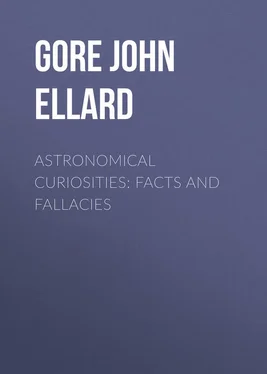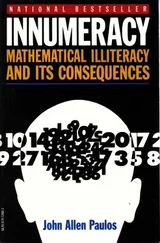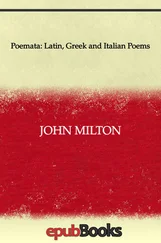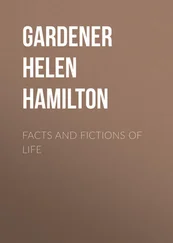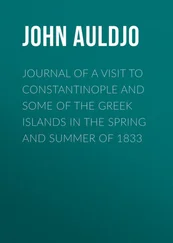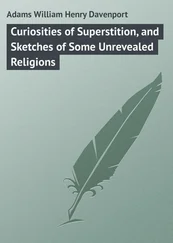John Gore - Astronomical Curiosities - Facts and Fallacies
Здесь есть возможность читать онлайн «John Gore - Astronomical Curiosities - Facts and Fallacies» — ознакомительный отрывок электронной книги совершенно бесплатно, а после прочтения отрывка купить полную версию. В некоторых случаях можно слушать аудио, скачать через торрент в формате fb2 и присутствует краткое содержание. Жанр: Физика, foreign_antique, foreign_prose, на английском языке. Описание произведения, (предисловие) а так же отзывы посетителей доступны на портале библиотеки ЛибКат.
- Название:Astronomical Curiosities: Facts and Fallacies
- Автор:
- Жанр:
- Год:неизвестен
- ISBN:нет данных
- Рейтинг книги:5 / 5. Голосов: 1
-
Избранное:Добавить в избранное
- Отзывы:
-
Ваша оценка:
- 100
- 1
- 2
- 3
- 4
- 5
Astronomical Curiosities: Facts and Fallacies: краткое содержание, описание и аннотация
Предлагаем к чтению аннотацию, описание, краткое содержание или предисловие (зависит от того, что написал сам автор книги «Astronomical Curiosities: Facts and Fallacies»). Если вы не нашли необходимую информацию о книге — напишите в комментариях, мы постараемся отыскать её.
Astronomical Curiosities: Facts and Fallacies — читать онлайн ознакомительный отрывок
Ниже представлен текст книги, разбитый по страницам. Система сохранения места последней прочитанной страницы, позволяет с удобством читать онлайн бесплатно книгу «Astronomical Curiosities: Facts and Fallacies», без необходимости каждый раз заново искать на чём Вы остановились. Поставьте закладку, и сможете в любой момент перейти на страницу, на которой закончили чтение.
Интервал:
Закладка:
Under certain conditions it would be theoretically possible, according to Mr. Whitmell, to see the globe of Saturn through the Cassini division in the ring. But the observation would be one of great difficulty and delicacy. The effect would be that, of the arc of the division which crosses the planet’s disc, “a small portion will appear bright instead of dark, and may almost disappear.” 161 161 Nature , May 22, 1902.
A remarkable white spot was seen on Saturn on June 23, 1903, by Prof. Barnard, and afterwards by Mr. Denning. 162 162 Ibid. , July 9, 1903.
Another white spot was seen by Denning on July 9 of the same year. 163 163 Ibid. , July 16, 1903.
From numerous observations of these spots, Denning found a rotation period for the planet of about 10h 39m 21s. 164 164 Nature , September 24, 1903.
From observations of the same spots Signor Comas Sola found a period 10h 38m·4, a close agreement with Denning’s result. For Saturn’s equator, Prof. Hill found a rotation period of 10h 14m 23s·8, so that – as in the case of Jupiter – the rotation is faster at the equator than in the northern latitudes of the planet. A similar phenomenon is observed in the sun. Mr. Denning’s results were fully confirmed by Herr Leo Brenner, and other German astronomers. 165 165 Ibid. , October 8, 1903.
Photographs taken by Prof. V. M. Slipher in America show that the spectrum of Saturn is similar to that of Jupiter. None of the bands observed in the planet’s spectrum are visible in the spectrum of the rings. This shows that if the rings possess an atmosphere at all, it must be much rarer than that surrounding the ball of the planet. Prof. Slipher says that “none of the absorption bands in the spectrum of Saturn can be identified with those bands due to absorption in the earth’s atmosphere,” and there is no trace of aqueous vapour. 166 166 Astrophysical Journal , vol. 26 (1907), p. 60.
In September, 1907, M. G. Fournier suspected the existence of a “faint transparent and luminous ring” outside the principal rings of Saturn. He thinks that it may possibly be subject to periodical fluctuations of brightness, sometimes being visible and sometimes not. 167 167 Nature , January 30, 1908.
This dusky ring was again suspected at the Geneva Observatory in October, 1908. 168 168 Ibid. , October 15, 1908.
M. Schaer found it a difficult object with a 16-inch Cassegrain reflector. Prof. Stromgen at Copenhagen, and Prof. Hartwig at Bamberg, however, failed to see any trace of the supposed ring. 169 169 Ibid. , October 29, 1908.
It was seen at Greenwich in October, 1908.
A “dark transit” of Saturn’s satellite Titan across the disc of the planet has been observed on several occasions. It was seen by Mr. Isaac W. Ward, of Belfast, on March 27, 1892, with a 4·3-inch Wray refractor. The satellite appeared smaller than its shadow. The phenomenon was also seen on March 12 of the same year by the Rev. A. Freeman, Mr. Mee, and M. F. Terby; and again on November 6, 1907, by Mr. Paul Chauleur and Mr. A. B. Cobham. 170 170 Journal , B.A.A., March, 1908, and June 22, 1908.
The recently discovered tenth satellite of Saturn, Themis, was discovered by photography, and has never been seen by the eye even with the largest telescopes! But its existence is beyond all doubt, and its orbit round the planet has been calculated.
Prof. Hussey of the Lick Observatory finds that Saturn’s satellite Mimas is probably larger than Hyperion. He also finds from careful measurements that the diameter of Titan is certainly overestimated, and that its probable diameter is about 2500 miles. 171 171 Nature , June 25, 1903.
The French astronomer, M. Lucien Rudaux, finds the following variation in the light of the satellites of Saturn: —
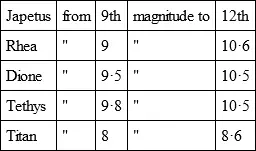
The variation of light is, he thinks, due to the fact that the period of rotation of each satellite is equal to that of their revolution round the planet; as in the case of our moon. 172 172 Bulletin, Ast. Soc. de France , June, 1904.
The names of the satellites of Saturn are derived from the ancient heathen mythology. They are given in order of distance from the planet, the nearest being Mimas and the farthest Themis.
1. Mimas was a Trojan born at the same time as Paris.
2. Enceladus was son of Tartarus and Ge.
3. Tethys was wife of Oceanus, god of ocean currents. She became mother of all the chief rivers in the universe, as also the Oceanides or sea nymphs.
4. Dione was one of the wives of Zeus.
5. Rhea was a daughter of Uranus. She married Saturn, and became the mother of Vesta, Ceres, Juno, and Pluto.
6. Titan was the eldest son of Uranus.
7. Hyperion was the god of day, and the father of sun and moon.
8. Japetus was the fifth son of Uranus, and father of Atlas and Prometheus. 173 173 Pop. Ast. , vol. 12, pp. 408-9.
9. Phœbe was daughter of Uranus and Ge.
10. Themis was daughter of Uranus and Ge, and, therefore, sister of Phœbe.
In a review of Prof. Comstock’s Text Book of Astronomy in The Observatory , November, 1901, the remark occurs, “We are astonished to see that Mr. Comstock alludes with apparent seriousness to the nine satellites of Saturn. As regards the ninth satellite, we thought that all astronomers held with Mrs. Betsy Prig on the subject of this astronomical Mrs. Harris.” This reads curiously now (1909) when the existence of the ninth satellite (Phœbe) has been fully confirmed, and a tenth satellite discovered.
CHAPTER X
Uranus and Neptune
From observations of Uranus made in 1896, M. Leo Brenner concluded that the planet rotates on its axis in about 8½ hours (probably 8h 27m). This is a short period, but considering the short periods of Jupiter and Saturn there seems to be nothing improbable about it.
Prof. Barnard finds that the two inner satellites of Uranus are difficult objects even with the great 36-inch telescope of the Lick Observatory! They have, however, been photographed at Cambridge (U.S.A.) with a 13-inch lens, although they are “among the most difficult objects known.” 174 174 Nature , August 29, 1889.
Sir William Huggins in 1871 found strong absorption lines (six strong lines) in the spectrum of Uranus. One of these lines indicated the presence of hydrogen, a gas which does not exist in our atmosphere. Three of the other lines seen were situated near lines in the spectrum of atmospheric air. Neither carbonic acid nor sodium showed any indications of their presence in the planet’s spectrum. A photograph by Prof. Slipher of Neptune’s spectrum “shows the spectrum of this planet to contain many strong absorption bands. These bands are so pronounced in the part of the spectrum between the Fraunhofer lines F and D, as to leave the solar spectrum unrecognizable… Neptune’s spectrum is strikingly different from that of Uranus , the bands in the latter planet all being reinforced in Neptune . In this planet there are also new bands which have not been observed in any of the other planets. The F line of hydrogen is remarkably dark … this band is of more than solar strength in the spectrum of Uranus also. Thus free hydrogen seems to be present in the atmosphere of both these planets. This and the other dark bands in these planets bear evidence of an enveloping atmosphere of gases which is quite unlike that which surrounds the earth.” 175 175 Astrophysical Journal , vol. 26 (1907), p. 62.
Интервал:
Закладка:
Похожие книги на «Astronomical Curiosities: Facts and Fallacies»
Представляем Вашему вниманию похожие книги на «Astronomical Curiosities: Facts and Fallacies» списком для выбора. Мы отобрали схожую по названию и смыслу литературу в надежде предоставить читателям больше вариантов отыскать новые, интересные, ещё непрочитанные произведения.
Обсуждение, отзывы о книге «Astronomical Curiosities: Facts and Fallacies» и просто собственные мнения читателей. Оставьте ваши комментарии, напишите, что Вы думаете о произведении, его смысле или главных героях. Укажите что конкретно понравилось, а что нет, и почему Вы так считаете.
